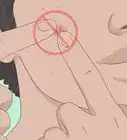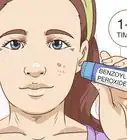This article was co-authored by Margareth Pierre-Louis, MD. Dr. Margareth Pierre-Louis is a board certified Dermatologist and Dermatopathologist, Physician Entrepreneur, and the Founder of Twin Cities Dermatology Center and Equation Skin Care in Minneapolis, Minnesota. Twin Cities Dermatology Center is a comprehensive dermatology clinic treating patients of all ages through clinical dermatology, cosmetic dermatology, and telemedicine. Equation Skin Care was created to provide the best in evidence-based, natural skin care products. Dr. Pierre-Louis earned a BS in Biology and an MBA from Duke University, an MD from the University of North Carolina at Chapel Hill, completed a residency in dermatology at the University of Minnesota, and completed a dermatopathology fellowship at Washington University in St Louis. Dr. Pierre-Louis is board certified in dermatology, cutaneous surgery, and dermatopathology by the American Boards of Dermatology and Pathology.
There are 13 references cited in this article, which can be found at the bottom of the page.
wikiHow marks an article as reader-approved once it receives enough positive feedback. In this case, several readers have written to tell us that this article was helpful to them, earning it our reader-approved status.
This article has been viewed 342,518 times.
Pimples are formed from an excess of oil in your skin and can be embarrassing and annoying. Even after popping a pimple, the surrounding skin can look inflamed or red. By applying a hydrocolloid dressing or spreading all-natural ingredients like witch hazel or aloe vera over the area, you can minimize the appearance of a popped pimple significantly. We'll show you how to reduce redness and irritation from a popped pimple!
Steps
Reducing Pimple Redness Overnight
-
1Apply ice to reduce swelling and redness. Ice can help reduce inflammation, which might help shrink your pimple. Wrap an ice cube in a paper towel and hold it up to your pimple for 5-10 minutes, pressing firmly. Take a 10-minute break, then repeat the process two more times.[1]
- If you don’t have ice readily available, try using a cold towel or a bag of frozen vegetables wrapped in a clean cloth.[2]
- Always apply ice with material between the ice and your skin, and never apply ice for more than 15-20 minutes.
-
2Drain the pimple by using a warm compress. You should not squeeze your pimple. Your pimple will often pop on its own when a white head forms. Removing the pus will prevent infections and can reduce inflammation.[3] Gently press down on the sides of the pimple with your washcloth until all of the pus has been pushed out.[4]
- Wash your hands before and after touching a pimple.
- A whitehead designates that the pus is near the surface of your skin.
- Squeezing a pimple can damage your skin and help spread bacteria to other parts of your face.
Advertisement -
3Rub an antibiotic ointment into the pimple. A popped pimple is an open wound and applying an ointment or solution can help heal your skin. Apply an antibiotic ointment, like Neosporin, to the pimple to help heal and protect it.
- As an alternative, you can apply all-natural solutions like witch hazel or warm water with salt to the area if you don't have an antibiotic ointment.
- For minor pimple wounds, an antibiotic ointment can help it heal in a couple of days.
-
4Don't pick your pimple. After you pop your pimple, you may want to pick at the scab that forms. You should not do this. Irritating the area will make the pimple swell, get irritated, and become redder.[5] Picking at your skin can even lead to scarring in some cases, so it's best to leave it be.[6]
- Picking at your pimple can slow down the healing process. Every time you touch your popped pimple, you are transferring bacteria and other contaminants to the open wound.
- It's especially important that you do not pick at pimples or whiteheads that form under the skin. Irritating or causing an injury to the deeper part of the skin, known as the dermis, can lead to irreversible scarring.[7]
Trying Natural Remedies
-
1Dab the pimple with honey. Covering your popped pimple with honey can be an effective way to heal the wound overnight.[8] Use a cotton swab to spread a light layer of honey over the popped pimple and let it dry.
- Honey is an astringent and it has antiseptic properties and promotes wound healing.
-
2Use an apple cider vinegar. Apple cider vinegar is antibacterial, antimicrobial, and has antiseptic properties.[9] You can put it on your pimple to help reduce redness, inflammation, and to promote healing. Dilute the vinegar so that your solution is four parts water to one part vinegar. Then, apply the vinegar directly to the skin with a cotton ball.
- Start with a larger ratio of water to vinegar if you have sensitive skin.
-
3Apply aloe vera gel to the popped pimple. Aloe vera reduces inflammation and promotes healing, which will help the pimple look smaller the next day. Use a cotton swab to apply the aloe vera gel to the popped pimple. Apply the gel each night until the appearance of the popped pimple is reduced.[10]
-
4Wipe witch hazel over your popped pimple. Witch hazel is an astringent and pulls fluids away from pimples. This can help reduce inflammation and redness overnight.[11]
-
5Try an antiseptic oil. Certain oils have antiseptic properties and can help your pimple heal. Use a swab or a cotton ball to dab some oil on the popped pimple. Leave the oil on your skin until it dries, then reapply more.
- If your skin is sensitive, you should spot test the oil on your skin first.
- Some examples of antiseptic oil includes tea tree oil, oregano, spearmint, calendula, rosemary, and lavender.[12]
-
6Dab calamine lotion over the popped pimple. Calamine lotion helps reduce the appearance of acne scars and will reduce redness and inflammation wherever you apply it. Use a cotton swab to apply the lotion over the pimple and let it sit in overnight. When you wake up, wash the lotion off your face.
-
7Ice the popped pimple before you go to sleep. Ice works well to temporarily reduce inflammation from a popped pimple.[13] Use a cold compress or ice pack, and hold it to the area for 3-4 minutes.
- Ice the pimple a few times before bed.
Using Pimple Patches
-
1
-
2Cut a hydrocolloid dressing to fit over the popped pimple. You can find these in most drug stores, pharmacies, or department stores. Cut a large enough piece of hydrocolloid dressing so that it can fit over the area of skin where you pimple is. Once it's the right size, you can remove the paper backing to uncover the adhesive.
- If the dressing is already an appropriate size for your pimple, you can skip this step.
- If your dressing does not have adhesive, you can secure the edges of the dressing with medical tape.
-
3Cover the pimple with a hydrocolloid dressing. Press the sticky side of the dressing onto the pimple. Flatten out the dressing onto your face, making sure to smooth over any wrinkles or creases in it.[16]
- Hydrocolloid dressings absorb fluids in a wound and reduce swelling.
- Examples of hydrocolloid dressings include Nexcare Acne Absorbing Covers, Johnson & Johnson Tough Pads, or DuoDERM Dressing.
-
4Replace the hydrocolloid dressing. Leave the hydrocolloid dressing on your face overnight. Replace the dressing in the morning when you wake up. You should see a reduction in both pus and inflammation around the area.[17]
- If your skin gets irritated or a rash forms, stop using hydrocolloid dressings.
- Gently pick up one corner of the dressing and peel it away to remove it.
Expert Q&A
Did you know you can get expert answers for this article?
Unlock expert answers by supporting wikiHow
-
QuestionIf calendula oil assures to get your pimples out of your face, isn't it weird that oily things on your face makes acne appear?
 Chris M. Matsko, MDDr. Chris M. Matsko is a retired physician based in Pittsburgh, Pennsylvania. With over 25 years of medical research experience, Dr. Matsko was awarded the Pittsburgh Cornell University Leadership Award for Excellence. He holds a BS in Nutritional Science from Cornell University and an MD from the Temple University School of Medicine in 2007. Dr. Matsko earned a Research Writing Certification from the American Medical Writers Association (AMWA) in 2016 and a Medical Writing & Editing Certification from the University of Chicago in 2017.
Chris M. Matsko, MDDr. Chris M. Matsko is a retired physician based in Pittsburgh, Pennsylvania. With over 25 years of medical research experience, Dr. Matsko was awarded the Pittsburgh Cornell University Leadership Award for Excellence. He holds a BS in Nutritional Science from Cornell University and an MD from the Temple University School of Medicine in 2007. Dr. Matsko earned a Research Writing Certification from the American Medical Writers Association (AMWA) in 2016 and a Medical Writing & Editing Certification from the University of Chicago in 2017.
Family Medicine Physician
References
- ↑ https://www.aad.org/news/how-to-treat-deep-painful-pimples
- ↑ https://www.uofmhealth.org/health-library/sig43888spec
- ↑ http://beautyeditor.ca/2015/10/06/how-to-pop-a-pimple
- ↑ http://www.skinacea.com/faq/acne/a14-healing-popped-pimple.html#.Vx-x_vkrK00
- ↑ https://www.aad.org/public/diseases/acne/skin-care/popping
- ↑ Margareth Pierre-Louis, MD. Board Certified Dermatologist. Expert Interview. 15 May 2020.
- ↑ Margareth Pierre-Louis, MD. Board Certified Dermatologist. Expert Interview. 15 May 2020.
- ↑ http://www.ncbi.nlm.nih.gov/pmc/articles/PMC3609166/
- ↑ http://www.ncbi.nlm.nih.gov/pmc/articles/PMC1785201/
- ↑ http://www.mayoclinic.org/diseases-conditions/acne/basics/alternative-medicine/con-20020580
- ↑ http://www.webmd.com/vitamins-supplements/ingredientmono-227-witch%20hazel.aspx?activeingredientid=227
- ↑ http://www.mayoclinic.org/diseases-conditions/acne/basics/alternative-medicine/con-20020580
- ↑ https://health.clevelandclinic.org/a-dermatologists-advice-on-how-to-get-rid-of-a-pimple/
- ↑ Margareth Pierre-Louis, MD. Board Certified Dermatologist. Expert Interview. 15 May 2020.
- ↑ https://www.aad.org/public/skin-hair-nails/skin-care/face-washing-101
- ↑ http://www.ncbi.nlm.nih.gov/pubmed/16688374
- ↑ http://www.ncbi.nlm.nih.gov/pubmed/16688374
About This Article
If you want to get rid of a popped pimple overnight, gently push down on it with a warm compress to drain it and make it less noticeable. Then, apply an antibiotic ointment to help it heal. If you don’t have any antibiotic ointment, try some aloe vera gel or witch hazel instead, to help reduce the inflammation. As your popped pimple heals, avoid picking at it, since this will just irritate it further, making it even more noticeable. To learn how to use hydrocolloid dressings to help your popped pimples heal, read more from our Medical co-author.
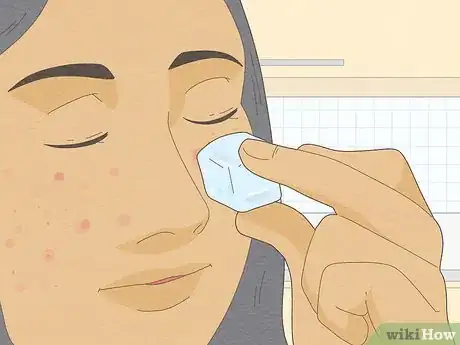
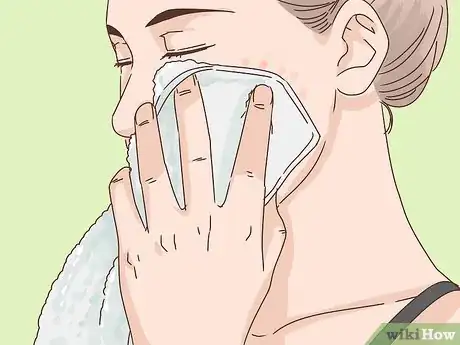
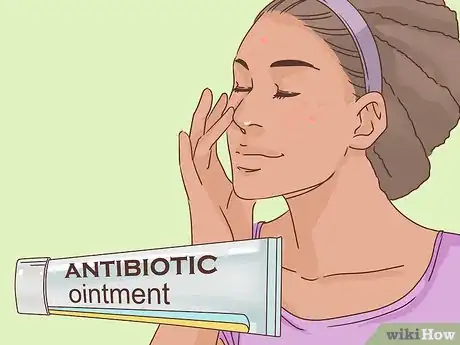
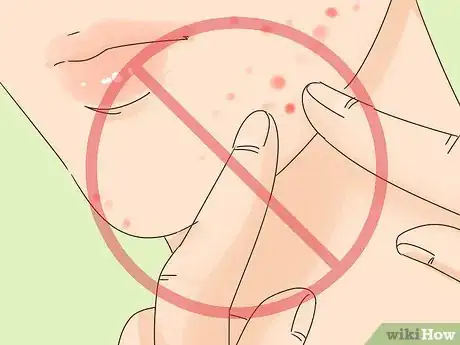

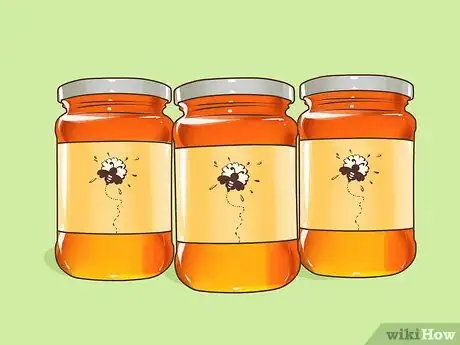
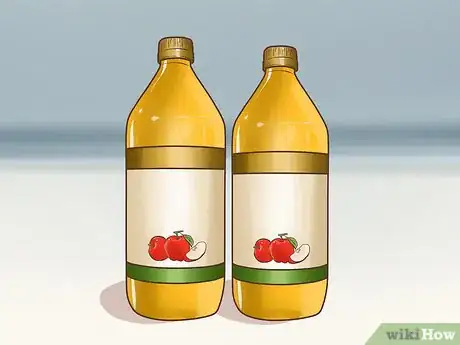
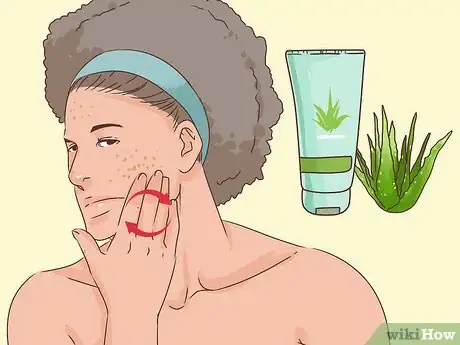
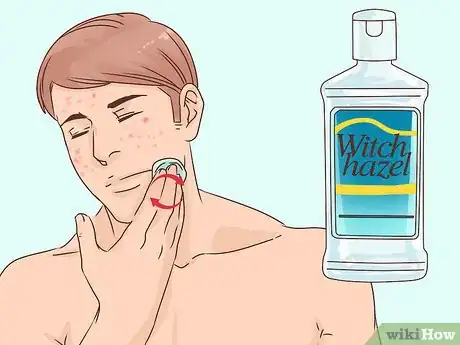
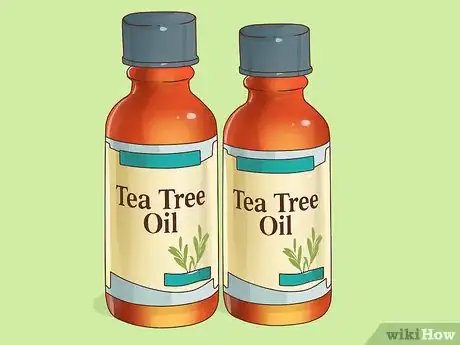
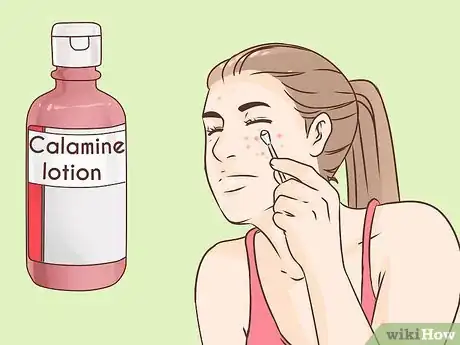
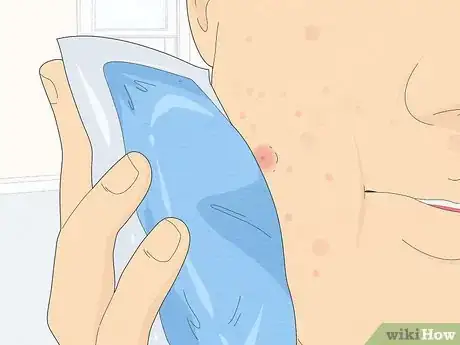
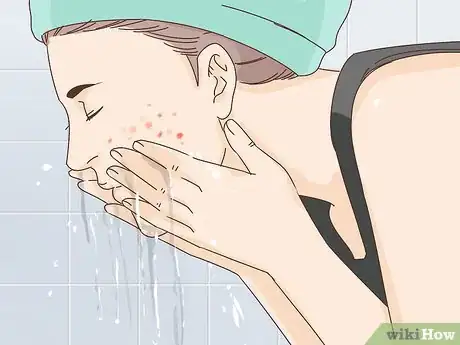
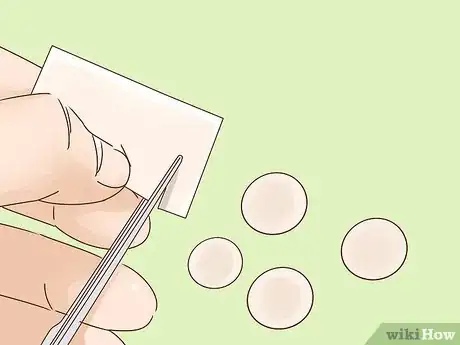
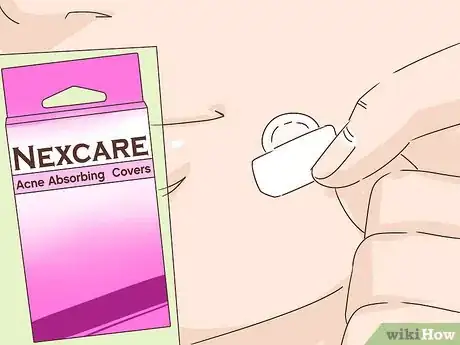
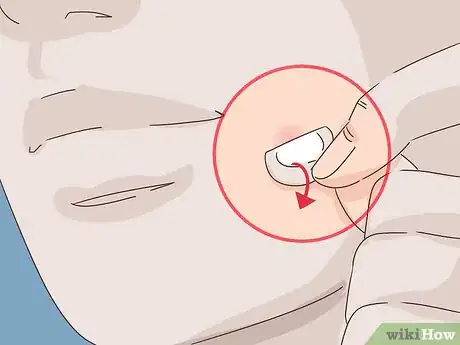
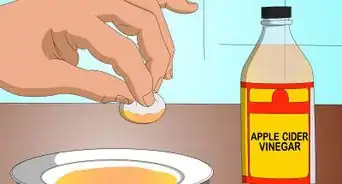
-Step-11-Version-2.webp)
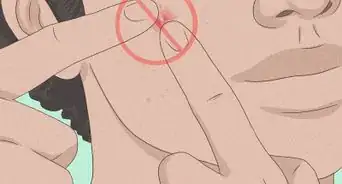
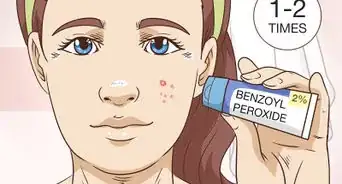
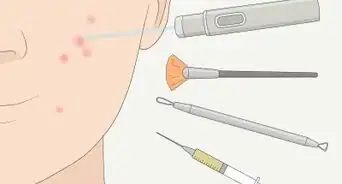
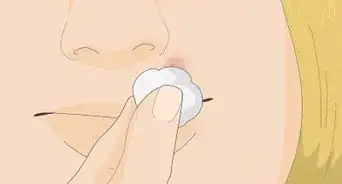


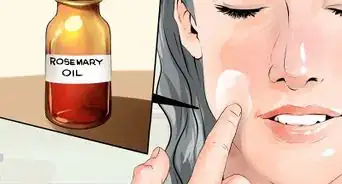
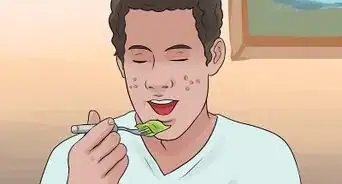









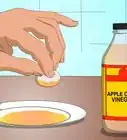
-Step-11-Version-2.webp)
